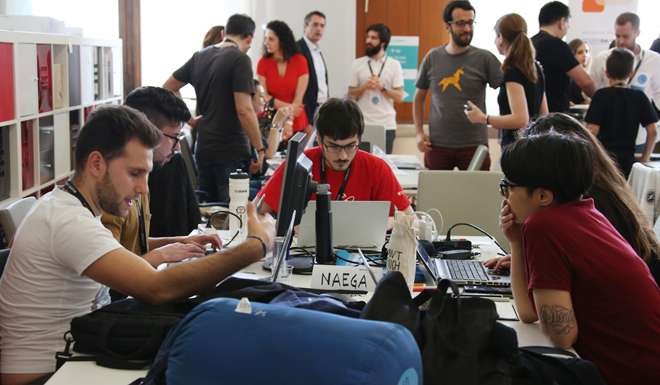Why it’s time to get your staff hacking
Managers should consider hosting hackathon events to foster innovation and teamwork

It’s time to encourage hacking within your company.
You may think I am kidding, but why not? Hacking is no longer the exclusive domain of criminals. Indeed, to distinguish it from underground activity, universities, cities and organisations, including Accenture, have been hosting hackathons to encourage creative thinking.
These are typically competitions for developers and designers, generally limited to 24 or 48 hours, in which they have to create a web app, platform or program. For example, Accenture has launched its first ever international connected hackathon, in collaboration with Expo 2020 Dubai, pitting talented young people with expertise in development, design and marketing from eight cities in Europe and the Middle East against one another on November 26 and 27.
An internal, company-wide hackathon could serve multiple important goals, such as improving your products, services and/or security, and boosting your company’s morale. A controlled hacking scenario where you ask your staff to find the flaws in your own system, for example, enables you to sniff out gaps and repair them before they are exploited by an outsider.
A hackathon centred on a new product design encourages out-of-the-box thinking, creativity and ownership. A hackathon focused on new procedures encourages efficiency and typically involves teamwork. No matter what the focus of the hackathon, you are sending a message that says, “I trust you and I think you’re smart and I believe you care enough about our company to want to improve and protect it.”

After the initial hack-session, follow-ups are imperative. Partnering employees with mentors who can help them take the idea to the next step fosters both ownership and potential new career paths for employees, turning a one-off hackathon into a program with longer-term, tangible benefits.
Surprise, delight and joy need to be embedded into the corporate thinking about technology underpinning using a product, not just selling it
You also don’t have to call it a hackathon – or limit the call for creativity to an event. A very effective method to achieve excellent results is called design thinking, which is a service-design mindset. It considers all product and service provision from the viewpoint of customer needs, including needs that customers may not yet know they have. Iterative, collaborative, creative, and prototype-driven, it synthesises all processes, systems, data, and structures from a human perspective. In this consumer-focused age, the customer experience is central.

Very often, today’s market leaders have the talent and the investment power to innovate but internal bureaucracy and complexity prevents the existing staff to think in new and innovative ways. Your job is to unleash that talent.
Gianfranco Casati is Accenture’s group chief executive of growth markets